We know, there’s no such thing as a stupid question. But there are some questions you might not want to ask your local shop or riding buddies. AASQ is our weekly series where we get to the bottom of your questions – serious or otherwise. This one is about drivetrain compatibility. Hit the link at the bottom of the post to submit your own question!
There is an ever increasing number of drivetrains on offer from a growing list of brands entering the market, daring to challenge giants Shimano and SRAM. TRP recently released the TR12 12s derailleur, Microshift now have a super affordable 10-speed drivetrain that’s lighter than Shimano’s XT, Box Components have complete 7-, 9- and 11-speed groups and ROTOR now offer a 13-speed mountain bike drivetrain with hydraulic shifting!
Likely, this will raise a number of questions on cross-brand compatibility, especially if you’re wanting to upgrade just some components on your drivetrain, rather than the whole lot. We would like to encourage readers to send in questions on this topic of drivetrain compatibility – we will get the brands to answer them for you! Now onto this week’s AASQ topic…
Have you ever wondered whether SRAM chains are compatible with Shimano’s cassettes, derailleurs and chainrings, and vice-versa? Or whether your 11-speed chain will work on a 12-speed cassette? We have! We posed your questions on drivetrain compatibility to the good guys at SRAM, Shimano and ROTOR.
Is a SRAM chain compatible with Shimano drivetrains (12s MTB)?
SHIMANO: Shimano 12-speed Hyperglide+ shifting relies on specific elements of the chain’s design like the extended inner link plate. Without the right chain, you won’t get Hyperglide+ shifting, which we could define as being able to engage with and drive the next smaller cog before the chain has finished leaving the larger cog.
This video illustrates the concept:
Since we’re talking about the whole drivetrain, we should also address the chain/crank interface.
The extended inner link plate comes into play at the chainring interface as well. Extending the inner chain link beyond the roller means that those plates are in contact with every tooth on the chainring.

Instead of alternating between two different chain link widths and tooth shapes, we get consistent engagement from the same chain plate holding the sides of the minus shaped teeth and corners of the plus shaped teeth. This more consistent engagement keeps the chain tracking straight, improving retention and driving efficiency.
As you would expect, these features are lost if the matching chain isn’t used. In terms of real world compatibility, while we don’t test for compatibility with other products, we’d like to share what we’ve heard from professional mechanics at bike shops.
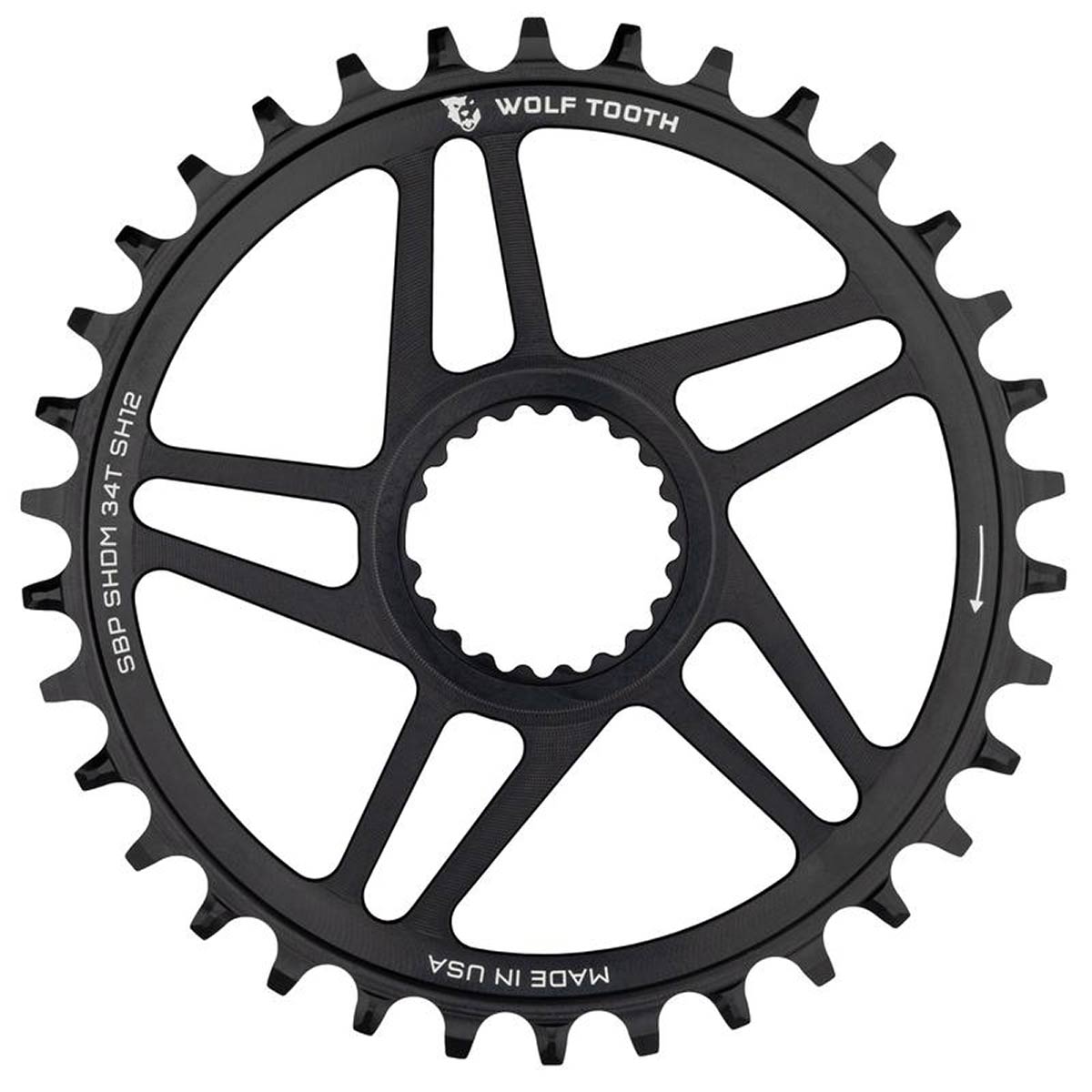
Some third party 12-speed chains won’t mesh with our 12-speed chainrings at all. Others seem to sit on the teeth OK but the ring wears very quickly. One particular situation where we recommend extra caution is when replacing a worn out Shimano 12-speed chain.
Since the chainring has worn down a little after a few hundred miles of riding, it may seem like other chains fit a little better than they would if everything were new. The chain is much tougher than the chainring though, so any mismatch in the shape will quickly wear down the ring and that will degrade chain retention.
This could damage the ring to the point where even going back to the original Shimano chain won’t work properly.
SRAM: EAGLE chains are not perfectly compatible with Shimano drivetrains. It might physically fit and fundamentally make your bike go forwards, but it will also lead to long term performance and security issues such as chain breakages and chain sucking etc.
It’s worth noting the 12 speed chains are also not the same across road and mountain bike systems. SRAM designs all of the components of a drivetrain to perform together as one system.
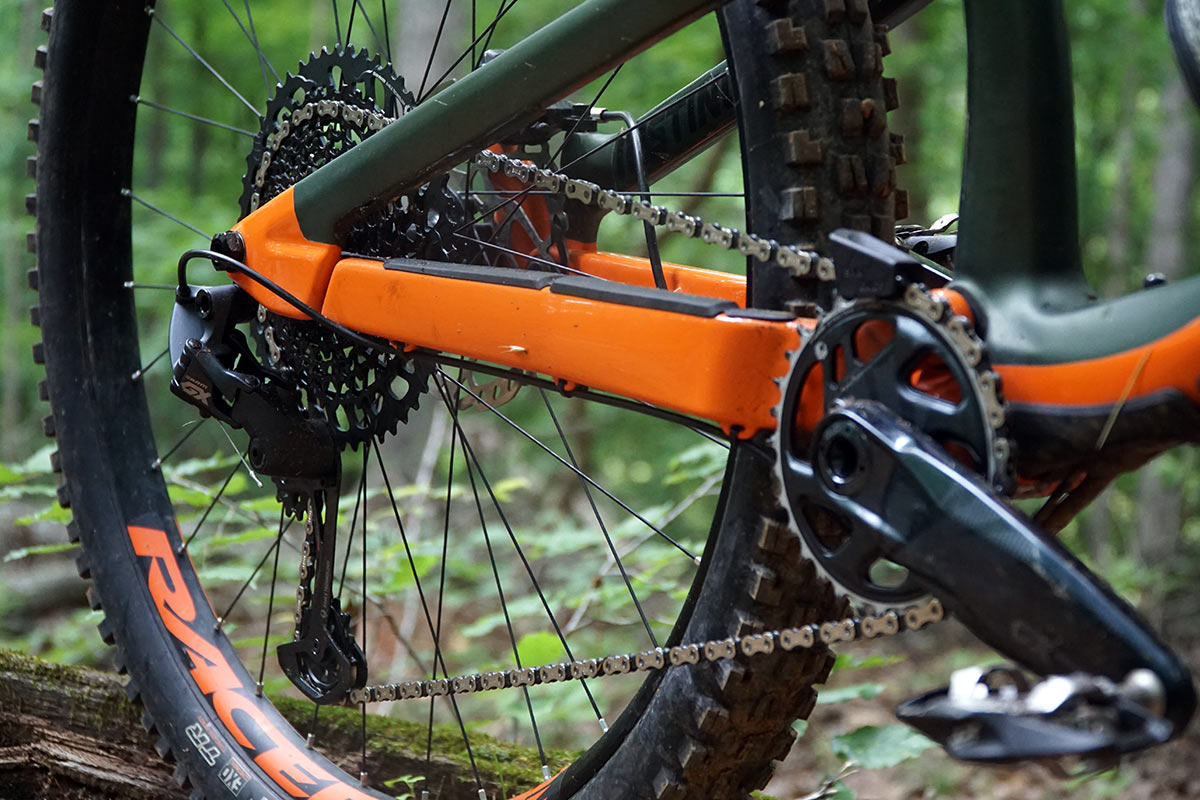
Ideally a rider would ensure a drivetrain is complete and all the parts come from the one manufacturer, therefore ensuring the best possible performance and longevity of the system.
Is an 11-speed crank-set compatible with a 12 speed-chain (Powerbox Alloy on a SRAM Force AXS)?
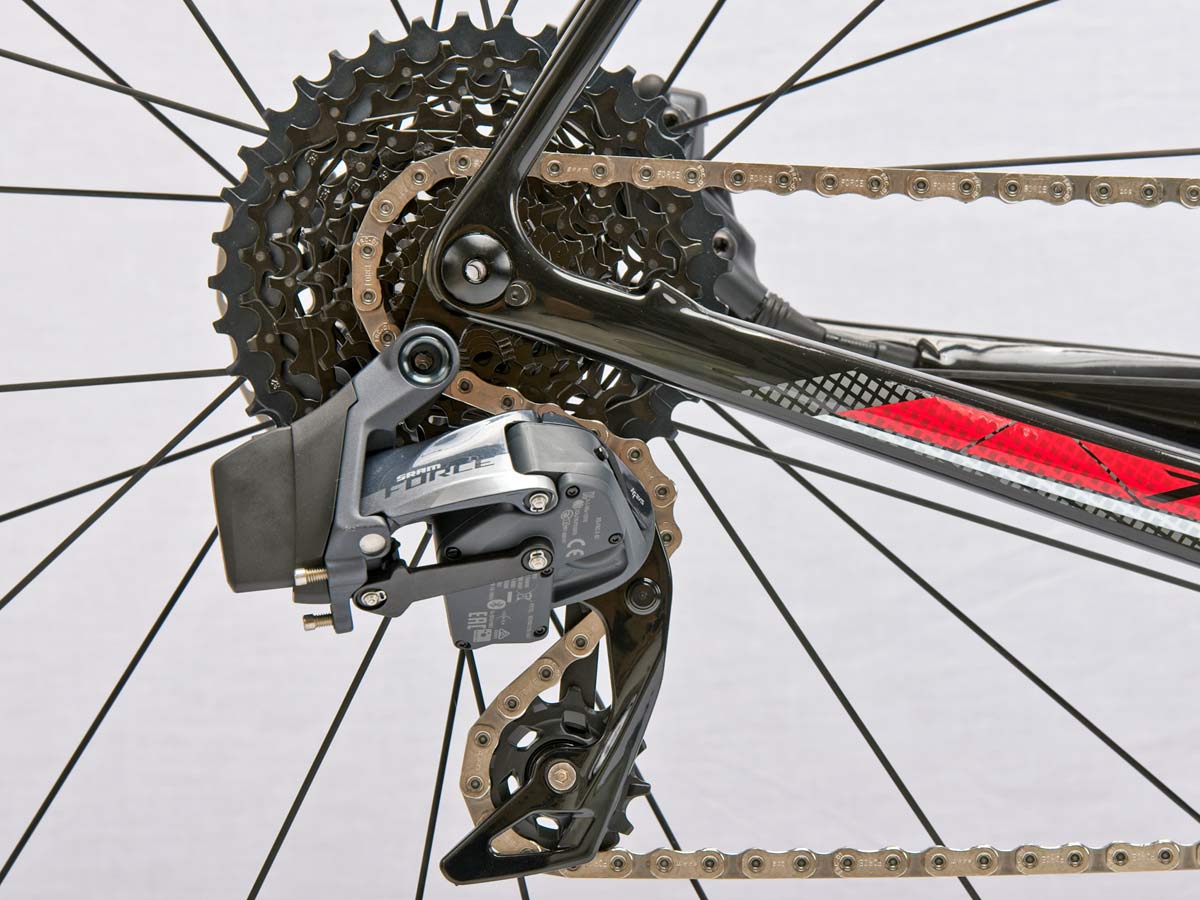
SRAM: Architecturally, the obvious difference is that the internal diameter of a 12-speed EAGLE chain is narrower than an 11-speed chain. There are also several other subtle technologies that make the chain what it is. Because of these a 12-speed chain would not fit correctly on a crankset with an 11-speed chainring.
What is the cog spacing on the ROTOR 12-speed cassettes, such as the 11-39? Are they compatible with a SRAM 12-speed drivetrain using an eagle derailleur and Red AXS shifters?
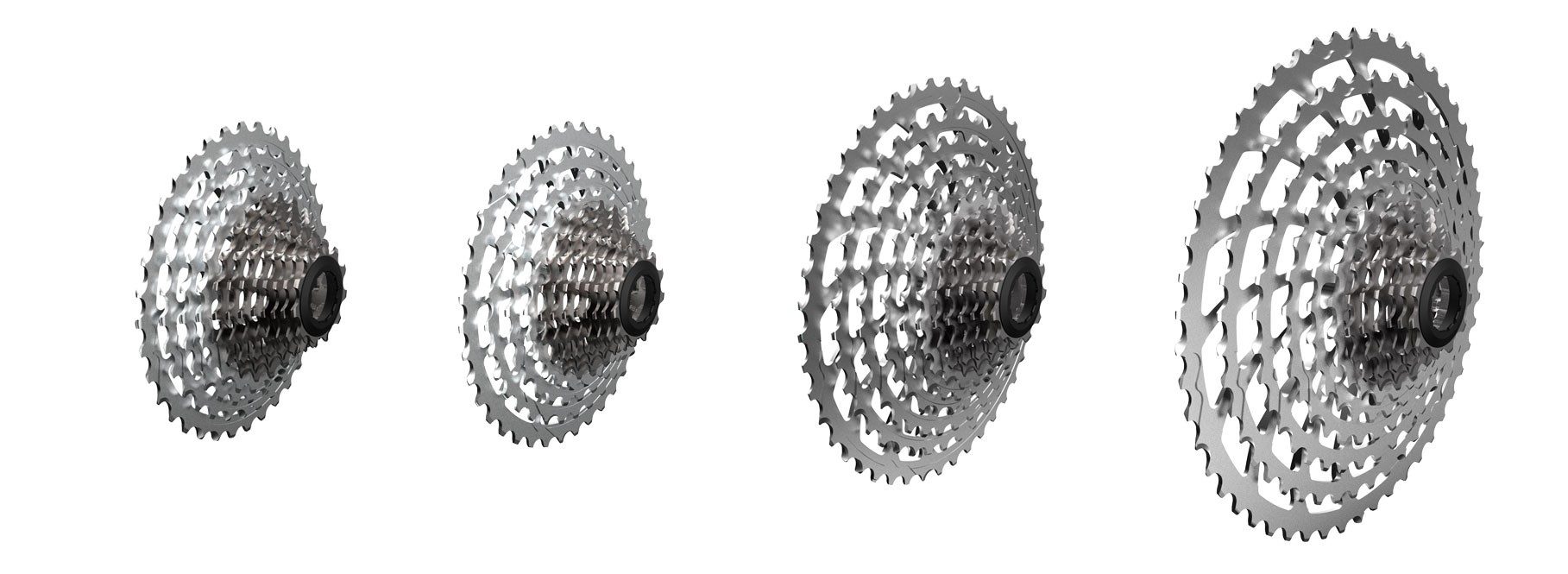
ROTOR: Our cassettes use standard 12-speed spacing and are cross compatible with other 12 speed drivetrains on the market. It does fit on a standard HG freehub body (11s) so it’s a quick way to upgrade to 12-speed without having to replace wheels or existing freehub bodies.
I have a Rotor Oval 54T chainring with Shimano ultra-drivetrain. I am switching to the SRAM 1 x 12 speed drivetrain. Is my current chainring compatible with 12 speed and if not, do you make one?
ROTOR: Our current range of 1x direct mount & 110 x 4 spider mount rings are compatible with the range of SRAM Eagle & Flat-top chains.
Can Di2 GRX 2x rings be mounted on FC-RX810-1 and GRX 1x rings be mounted on FC-RX810-2? If not, why not? Or, does the entire crankset have to be purchased to swap between 1x and 2x?
I’m ignoring, for the moment, the need to swap the RD, the cassette, and adding/removing the FD. I ask in part because the bike I’m anticipating buying comes with Di2 1x and I prefer a Di2 2x for my local roads. I understand the chain lines are different for GRX 1x vs 2x but is this compensated for by the rings themselves?
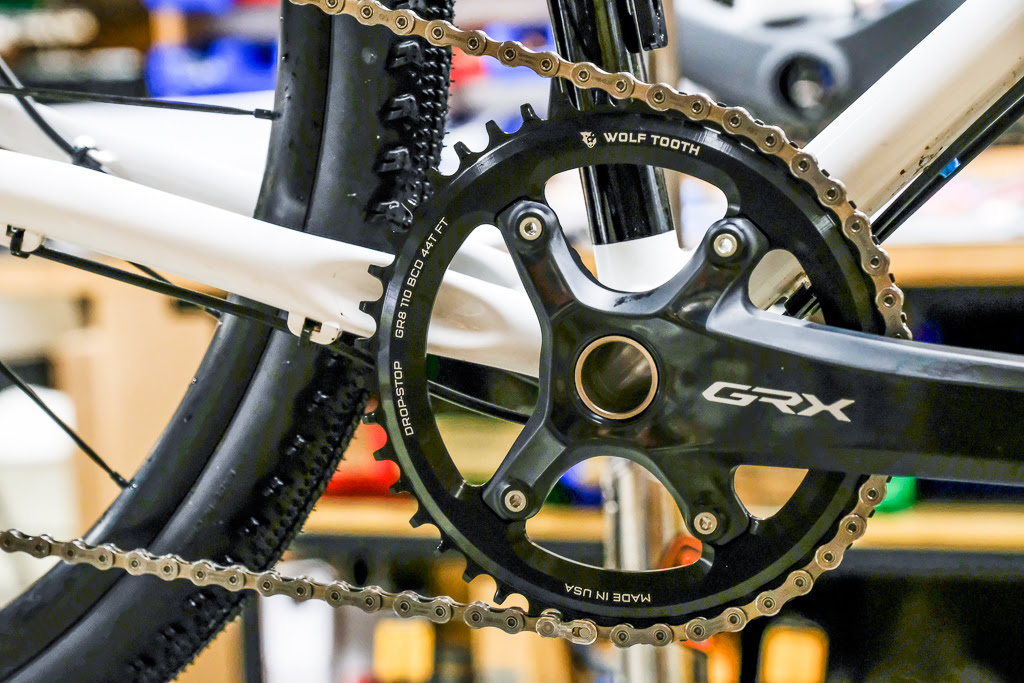
SHIMANO: Yes, with Shimano GRX cranks, you can switch between 1 x 11-speed and 2 x 11-speed setups by simply switching the chainrings. Both FC-RX810-1 and FC-RX810-2 use the same chainring bolt pattern so you can swap the rings and then follow up by changing the rear derailleur and adding/removing the GRX front derailleur.
Regarding the Shimano GRX line: I currently have full 105 r7000 with a compact crank and a 11-34 cassette. Can I use an SLX m7000 11-42 cassette or do I need the Rx 810 derailleur as well, and will this be compatible with the compact crank?
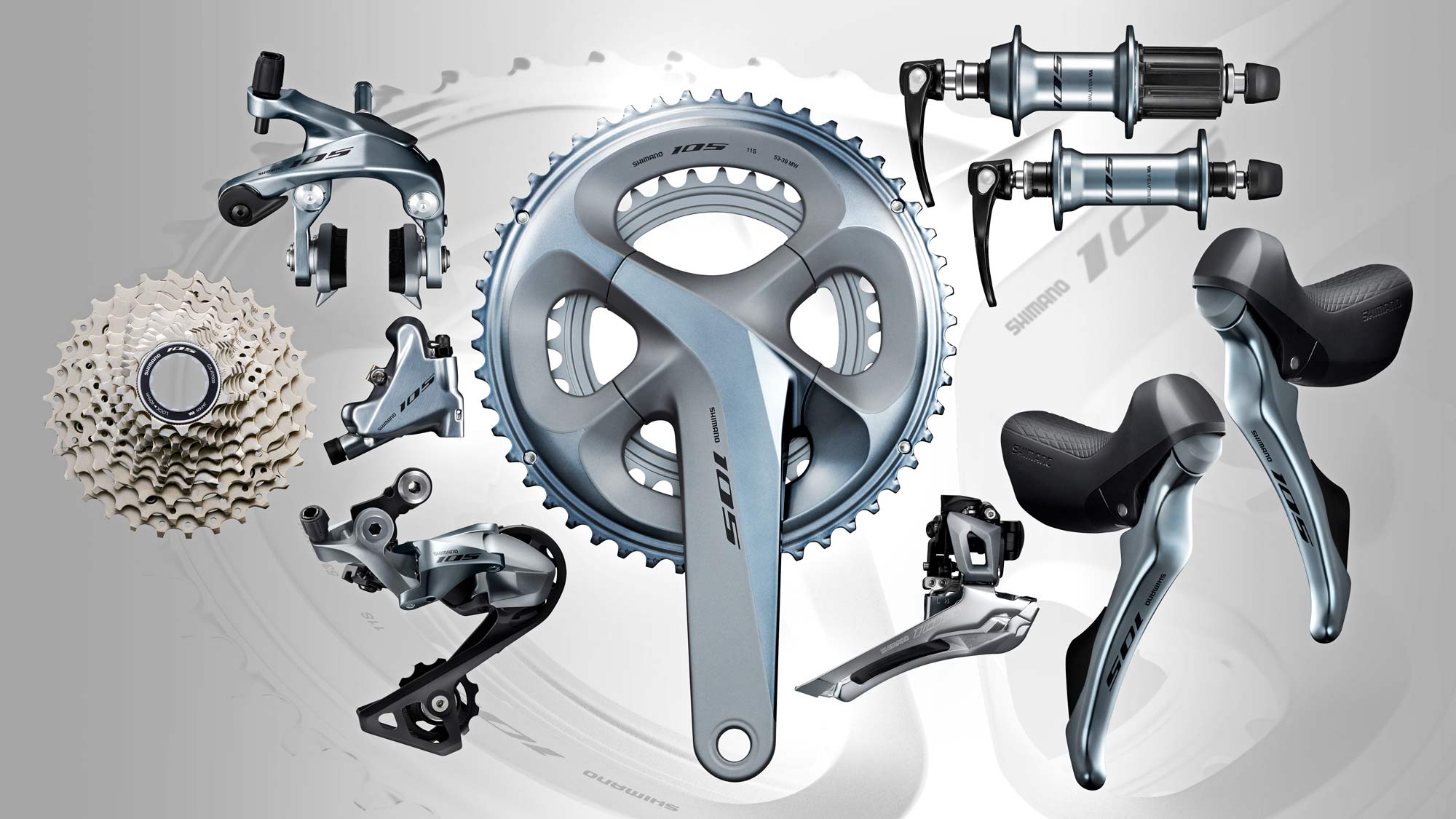
SHIMANO: Using an 11-42 tooth cassette is only possible when running a 1 x 11-speed drivetrain setup. Since the Shimano 105 drivetrain is a 2 x 11-speed group, it is not compatible with an 11-42-tooth cassette, even if you use the GRX RD-RX812 rear derailleur.
Got a question of your own? Click here to use the AASQ form to submit questions on any cycling-related topic of your choice, and we’ll get the experts to answer them for you!

